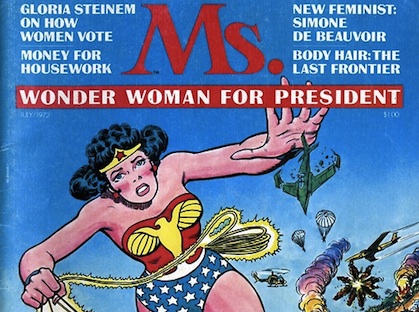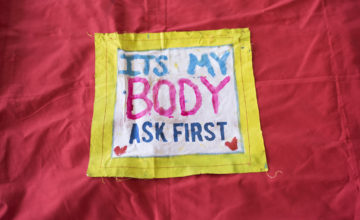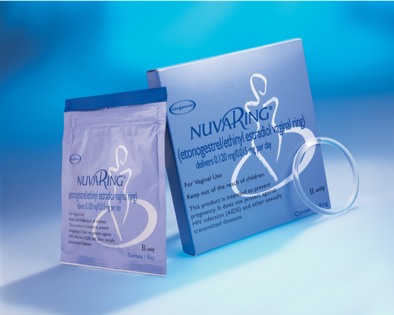Top 10 Wars Won by Women

In this, the year of the War on Women, it seems important to take a look back on all the hard-won battles women have poured their blood, sweat and tears into over the past 150 years. Seeing how far we’ve come makes it hard to understand why there are so many people across the country right now working to roll back our reproductive rights, restrict our access to birth control, and allow employers to pay us less than men. It’s to the point where many are speaking to a California whistleblower attorney to help them with a case against the companies that are pushing them in such horrible ways. It’s like they want to erase the ’70s! Let this top 10 list light a fire under your ass so you make sure that doesn’t happen this election year.
1.
The Women’s Suffrage Movement in America
A quick timeline:
1848: The first women’s rights convention is held in Seneca Falls, NY, over two days with about 300 attendees.
1869 (May): Susan B Anthony and Elizabeth Cady Stanton form the National Woman Suffrage Association in an effort to secure women the right to vote via a Constitutional amendment.
1869 (Nov): A national association is formed, focusing on gaining women’s voting rights through amendments to state constitutions.
1878: A federal woman suffrage amendment written by Susan B. Anthony is introduced in Congress.
1890: The two suffrage groups merge to form The National American Woman Suffrage Association (NAWSA) .
1919: The federal woman suffrage amendment is passed by the House and Senate.
1920: The 19th Amendment to the Constitution, which gives women the right to vote, becomes the law of the land.
2.
Margaret Sanger’s Birth Control Campaign
In 1916, Sanger opened the first U.S. birth control clinic in Brooklyn, NY. It only lasted 10 days and she was arrested, but she kept fighting, and two years later founded the American Birth Control League, followed by another — this time successful — clinic in NYC in 1923. Twenty years later in 1942, the ABCL became the Planned Parenthood we (almost) all know and love.
3.
Women’s Minority Groups
Since women were already a minority — at least back before we made up more than half of the population — we might call the following two pioneering organizations “minority minority groups.”
In 1935, Mary McLeod Bethune, the daughter of slave parents, founded the National Council of Negro Women to represent the concerns of black women and fight against job discrimination, racism, and sexism. Today, the group has 39 affiliated national organization and reaches almost four million women.
In 1955, The Daughters of Bilitis became the first lesbian organization founded in the United States (in San Fran, natch). What began as a secret social group — an alternative to lesbian bars, which were illegal at the time — later grew into an educational and political organization, with chapters across the country and a monthly magazine. It only lasted 14 years but, according to one DOB scholar, succeeded in “creating lesbian identity, visibility, institutions, and political strategies….broaden[ing] the very definition of social change to include female sexuality.”
4.
FDA Approval of The Pill (1960)
By the mid-20th century, after more than twenty years of research had been conducted on steroid hormones, the pump was primed for the development of hormonal birth control, but nobody wanted to touch it — not universities or pharmecuetical companies or the government. Thanks to Margaret Sanger (again!) and some private investors, scientific work on what would eventually become the Pill began in the 50s. And by 1957, the first version of the Pill was approved by the FDA, but only for menstrual disorders.
Three years later, with already half a million women having used it, the birth control pill was approved as a contraception. Still, it took a year for its producers to market it as such. Plus, the Pill wasn’t available to married women in all states until the Supreme Court case Griswold v. Connecticut in 1956, and wasn’t available to single women in all states until Eisenstadt v. Baird in — get this — 1972!
Because of its ease of use, high effectiveness, discreetness, and separation from the actual act of intercourse (no more “hold on while I slip into something more comfortable”), the Pill is credited with giving women unprecedented control over their reproduction and thus increased women’s enrollment in college, participation in the workforce, and enjoyment of sex.
5.
The Equal Rights Movement
Here’s a brief timeline of the strides made against the discrimination of women in the workplace and at school:
1961: President Kennedy forms the President’s Commission on the Status of Women, with Eleanor Roosevelt as chair; within two years, it finds significant, widespread discrimination against women in the workplace and recommends fair hiring practices, paid maternity leave, and affordable child care.
1963: Congress passes the Equal Pay Act, making it a crime for employers to pay a woman less than a man for the same job. Then how are we still getting only 73 cents to the male dollar exactly…?
1964: Title VII of the Civil Rights Act bans discrimination in the workplace based on sex or race.
1967: President Lyndon Johnson’s affirmative action policy of 1965 now is expanded to cover discrimination based on sex. No one should be discriminated against, especially within the workplace. Sadly, after women have been fighting for this, there are still incidents where people are discriminated against based on their gender. With that being said, this may be just one reason as to why companies might want to implement HR software within their business. This way, staff may feel confident enough to come forward and discuss any issues they may be having.
1973: The Supreme Court upholds a ruling that sex-segregated help-wanted ads in newspapers are unconstitutional, i.e. “women need not apply” is no longer kosher.
1972: The Equal Rights Amendment (ERA), originally introduced to Congress in 1923, is finally passed by Congress and sent to the states for ratification — which never happens. Since its official death in 1982, it’s been reintroduced in every session of Congress. Some day!
June 23: Title IX of the Education Amendments bans sex discrimination in schools, i.e. girls are athletes too!
1978: The Pregnancy Discrimination Act bans employers from firing a woman or denying her a job or a promotion because she is pregnant (or may become preggers).
2009: President Obama signs the Lily Ledbetter Fair Pay Restoration Act.
1963: Congress passes the Equal Pay Act, making it a crime for employers to pay a woman less than a man for the same job. Then how are we still getting only 73 cents to the male dollar exactly…?
1964: Title VII of the Civil Rights Act bans discrimination in the workplace based on sex or race.
1967: President Lyndon Johnson’s affirmative action policy of 1965 now is expanded to cover discrimination based on sex. No one should be discriminated against, especially within the workplace. Sadly, after women have been fighting for this, there are still incidents where people are discriminated against based on their gender. With that being said, this may be just one reason as to why companies might want to implement HR software within their business. This way, staff may feel confident enough to come forward and discuss any issues they may be having.
1973: The Supreme Court upholds a ruling that sex-segregated help-wanted ads in newspapers are unconstitutional, i.e. “women need not apply” is no longer kosher.
1972: The Equal Rights Amendment (ERA), originally introduced to Congress in 1923, is finally passed by Congress and sent to the states for ratification — which never happens. Since its official death in 1982, it’s been reintroduced in every session of Congress. Some day!
June 23: Title IX of the Education Amendments bans sex discrimination in schools, i.e. girls are athletes too!
1978: The Pregnancy Discrimination Act bans employers from firing a woman or denying her a job or a promotion because she is pregnant (or may become preggers).
2009: President Obama signs the Lily Ledbetter Fair Pay Restoration Act.
Read the rest of this Top 10 — women’s advancements #6 through #10 — on the Sundance Channel, which airs “Push Girls“, a series of women challenging the norm.

















Your brief timeline (yeah, I know, ya can’t include it all) of the suffrage movement should include the Wyoming Territory’s granting women the right to vote in 1869 (and don’t forget Ester Hobart Morris’ appointment as a justice of the pease).